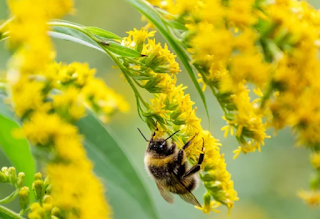Decoding Colony Collapse Disorder: A Gardener's Guide to Protecting Honeybees and Food Crops
Colony Collapse Disorder (CCD) is an ongoing challenge impacting honeybee populations, and its repercussions extend far beyond the apiary. As 20-40-year-old environmentally conscious citizens and experts engaged in both environmental activities and beekeeping, understanding the nuances of CCD becomes imperative.
CCD, discovered about a decade ago, leads to the sudden disappearance of worker bees from colonies, leaving behind a significant impact on food crops, especially those reliant on honeybee pollination. While studies suggest that CCD's rapid spread has slowed, its implications on the ecosystem and agriculture persist.
For gardeners within this age group, acknowledging the causes and effects of CCD is the first step toward positive action. Pesticide and herbicide use stand out as major contributors to CCD. Recognizing the pivotal role of honeybees in sustaining food crops, gardeners can make informed choices to mitigate CCD's impact.
Reducing or eliminating chemical pesticides and herbicides emerges as a crucial strategy. The use of these toxic substances not only directly harms pollinators but also disrupts the delicate balance of ecosystems. Gardeners committed to supporting pollinators, including honeybees, are encouraged to explore non-toxic and natural solutions for weed and pest control.
The focus on pollinator-friendly plants has gained momentum among gardeners in recent years. Beyond the aesthetic appeal, these plants play a vital role in maintaining the nutritional needs of pollinators. Monarch butterflies, for instance, rely on specific plants for sustenance, and the use of herbicides can obliterate these essential food sources.
Gardeners, as custodians of nature, possess a unique responsibility in preserving ecosystems. The introduction of native plants not only aids in reducing runoff and erosion but also fosters crucial relationships between insects and plants, products of millions of years of evolution. The symbiotic coexistence of native plants, pollinators, and other wildlife contributes to a healthier ecosystem.
The ramifications of CCD extend beyond the apiary. The beekeeping industry, which provides indispensable pollination services, faces disruptions. Agriculture, reliant on pollinators for crop growth, is directly impacted, threatening global food supplies. The potential havoc CCD could wreak on the worldwide economy, food exports, and manufacturing underscores the urgency of addressing this issue.
At the local level, gardeners can be catalysts for change. Armed with knowledge about CCD, they can educate their communities, advocate for reduced herbicide and pesticide use, and promote the adoption of native and pollinator-friendly plants. Through collective efforts, we can safeguard honeybee populations, ensuring the resilience of our food supply chain.
Frequently Asked Questions (FAQs):
Q: What is Colony Collapse Disorder (CCD)?
- A: CCD is an ongoing condition impacting honeybee populations, characterized by the sudden disappearance of worker bees, affecting food crops.
Q: What causes CCD, and how can gardeners contribute to its prevention?
- A: CCD has various causes, including pesticide and herbicide use. Gardeners can reduce or eliminate chemical pesticides, choose non-toxic alternatives, and plant pollinator-friendly flowers to support honeybees.
Q: Why are native plants essential in addressing CCD?
- A: Native plants play a crucial role in supporting pollinators, contributing to the overall health of ecosystems and helping honeybees find essential sources of pollen.
Q: How does CCD impact the beekeeping industry and agriculture?
- A: CCD disrupts honey production, poses challenges to the beekeeping industry, and directly affects agriculture by jeopardizing food crop growth.
Q: What can individuals do at the local level to address CCD?
- A: Gardeners can educate their communities, advocate for reduced herbicide and pesticide use, and promote the planting of native and pollinator-friendly plants to protect honeybee populations.
- #SaveTheBees, #ProtectPollinators, #GardeningForChange, #ColonyCollapseDisorder, #SustainableLandscaping

